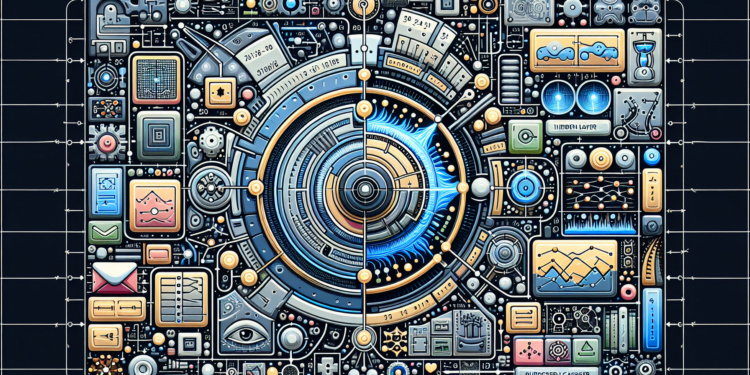Autoencoders: The Reconstructed Ingenuity of Artificial Intelligence
At the pulsating heart of contemporary artificial intelligence (AI) lies an intellectual architecture that has revolutionized the way machines understand and manipulate vast amounts of data: the autoencoders. These unsupervised machine learning architectures exhibit an unprecedented ability to learn efficient encodings of unlabeled data, leveraging an intrinsic understanding of the underlying structures in complex datasets.
Theoretical Fundamentals of Autoencoders
Architecture and Operation
Structurally, a conventional autoencoder consists of two components: the encoder and the decoder. The encoder, a neural network, transforms the input into a latent or encoded representation, reducing the dimensionality of the original data. The decoder, in turn, reconstructs the data from this latent representation with the aim of making the output as similar as possible to the original input.
Loss Function
Autoencoder optimization is performed by minimizing a loss function, such as the Mean Squared Error (MSE) for continuous data, which measures the disparity between the input and the reconstructed output. The smaller the loss, the more faithful the reconstruction achieved by the autoencoder.
Recent Algorithmic Advances
Variational Autoencoders (VAEs)
VAEs inject an element of uncertainty into the encoding process by modeling the distribution of the latent representation. They introduce a layer of latent variables sampled from a probabilistic distribution, typically Gaussian, facilitating the generation of new data instances after training.
Generative Adversarial Networks (GANs) and Autoencoders
GANs, though distinct in their conception, share similar goals with autoencoders in terms of data generation. A convergence of both architectures has been observed in developments such as the Adversarial Autoencoder (AAE), which combines the autoencoder framework with the adversarial discrimination of a GAN, resulting in a significant improvement in the quality of latent representations and ensuing reconstructions.
Emerging Practical Applications
Dimensionality Reduction and Visualization
In the realm of ‘big data’, autoencoders have stood out for their capacity to reduce dimensions, facilitating the visualization of high-dimensional data in two- or three-dimensional spaces – an invaluable tool for exploratory data analysis.
Anomaly Detection
The peculiar competence of autoencoders to reconstruct what they have learned lends itself as an effective technique for identifying anomalies or outliers. When trained primarily on normal data, these networks tend to reconstruct anomalies inefficiently, allowing their detection in applications such as fraud surveillance or predictive maintenance of industrial equipment.
Image Generation and Enhancement
Autoencoders have enabled advancements in image generation and enhancement, particularly valuable in fields such as medicine, where improvements in image quality can lead to more accurate diagnoses. Models like the DAE (Denoising Autoencoder) have proven effective in noise removal from images, learning to recover the clean signal from corrupted data.
Data Compression
Since autoencoders seek denser representations of data, they emerge as promising candidates for lossless data compression, where efficiency and faithful recovery of the original data are paramount.
Critical Evaluation: Comparative and Prospective
When comparing autoencoders to other unsupervised learning methods, such as principal component analysis (PCA), the latter are limited by their linearity, while autoencoders, being neural networks, are capable of capturing complex nonlinear relationships between data.
In the future, we can anticipate continued development in the integration of autoencoders with other AI paradigms. A promising example is their application in reinforcement learning, where efficient encoding of states can be vital for decision-making by agents in complex environments.
Case studies demonstrate the viability and superior performance of autoencoders in various scenarios, such as in the optimization of recommendation systems. Netflix, for instance, uses variants of autoencoders to improve the personalization of content suggestions, tapping into their capacity to discern hidden patterns in user preferences.
Conclusion
Autoencoders have proven to be a powerful and versatile technology across the broad spectrum of modern AI. With their adaptability and ongoing evolution, they challenge the boundaries of data compression, content generation, anomaly detection, and beyond. Their journey, far from reaching a pinnacle, continues to expand, with the promise of unraveling complexities yet unconceived and proposing solutions to challenges that today seem insurmountable.






















